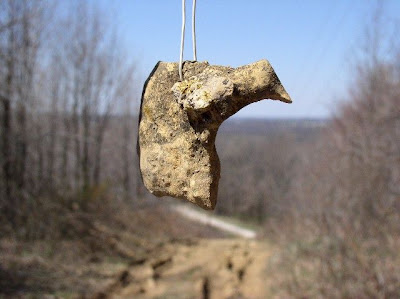Alan Day collection, Cambridge, Ohio
photo with scale
Reverse side of the bird pendant
Alan Day of Cambridge, Ohio, popularly (if one can say that about figure stones) introduced the concept of portable rock art with his web site almost a decade ago. This example from Day's Knob is interpreted by Alan as a bird pendant which balances in viewing position when hung from a cord. The hole also serves as the eye for a second bird on the opposite side of the artifact. A third bird, with wings, is seen emerging from/as the beak of the two larger bird heads.
For more information, visit the Day's Knob web site at the link below. Many anomalous artifacts are presented from all over the United States and from Europe as well.





































